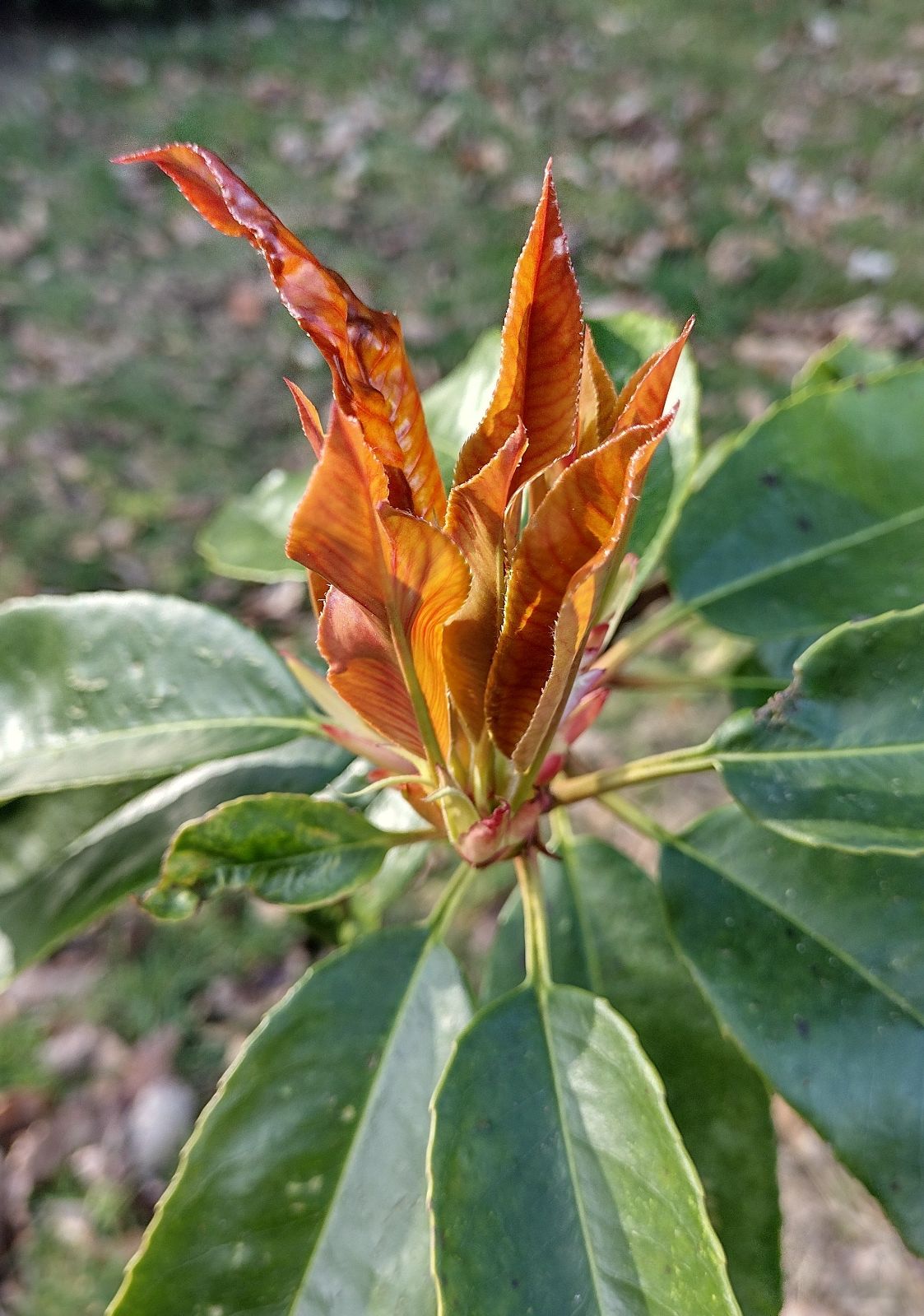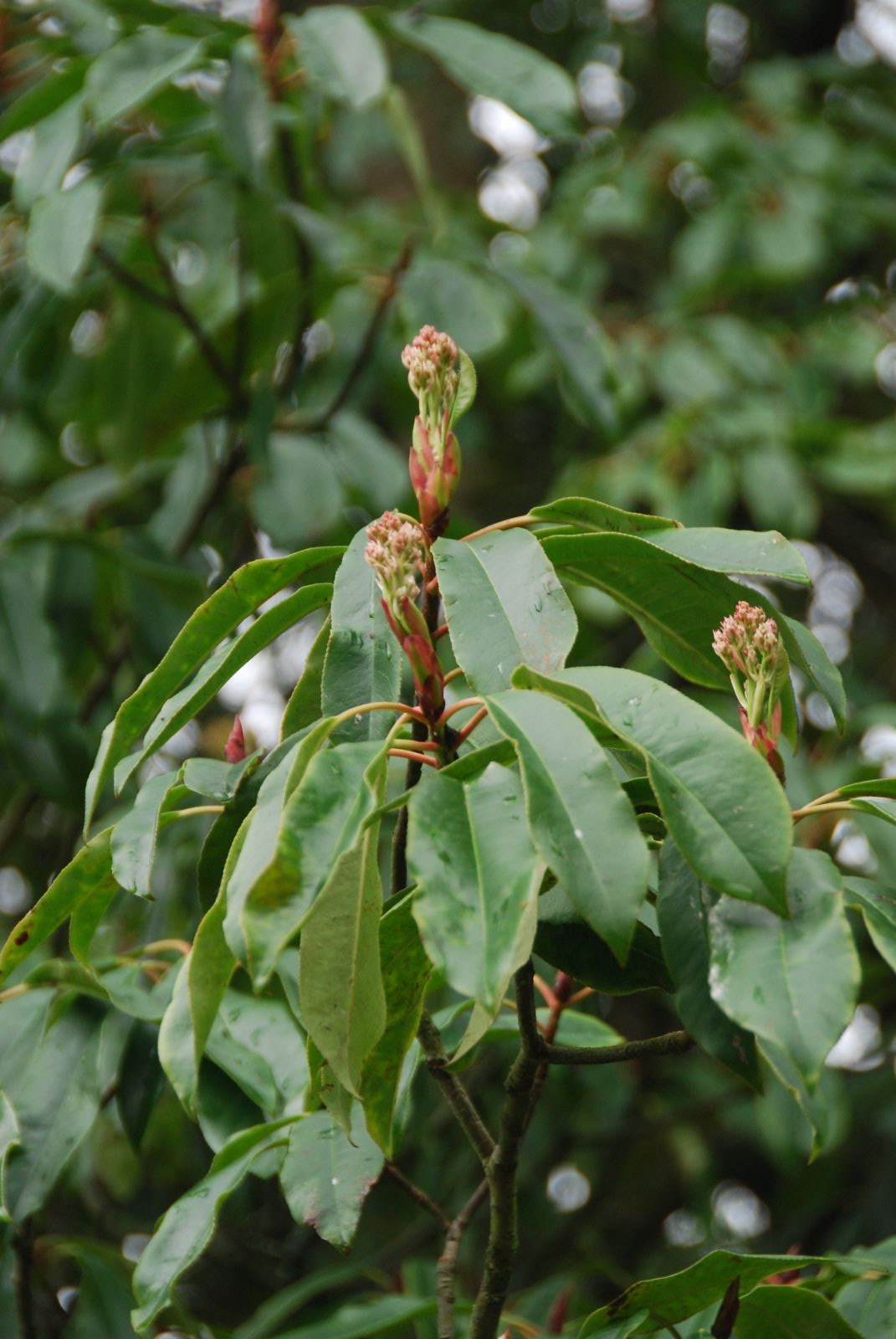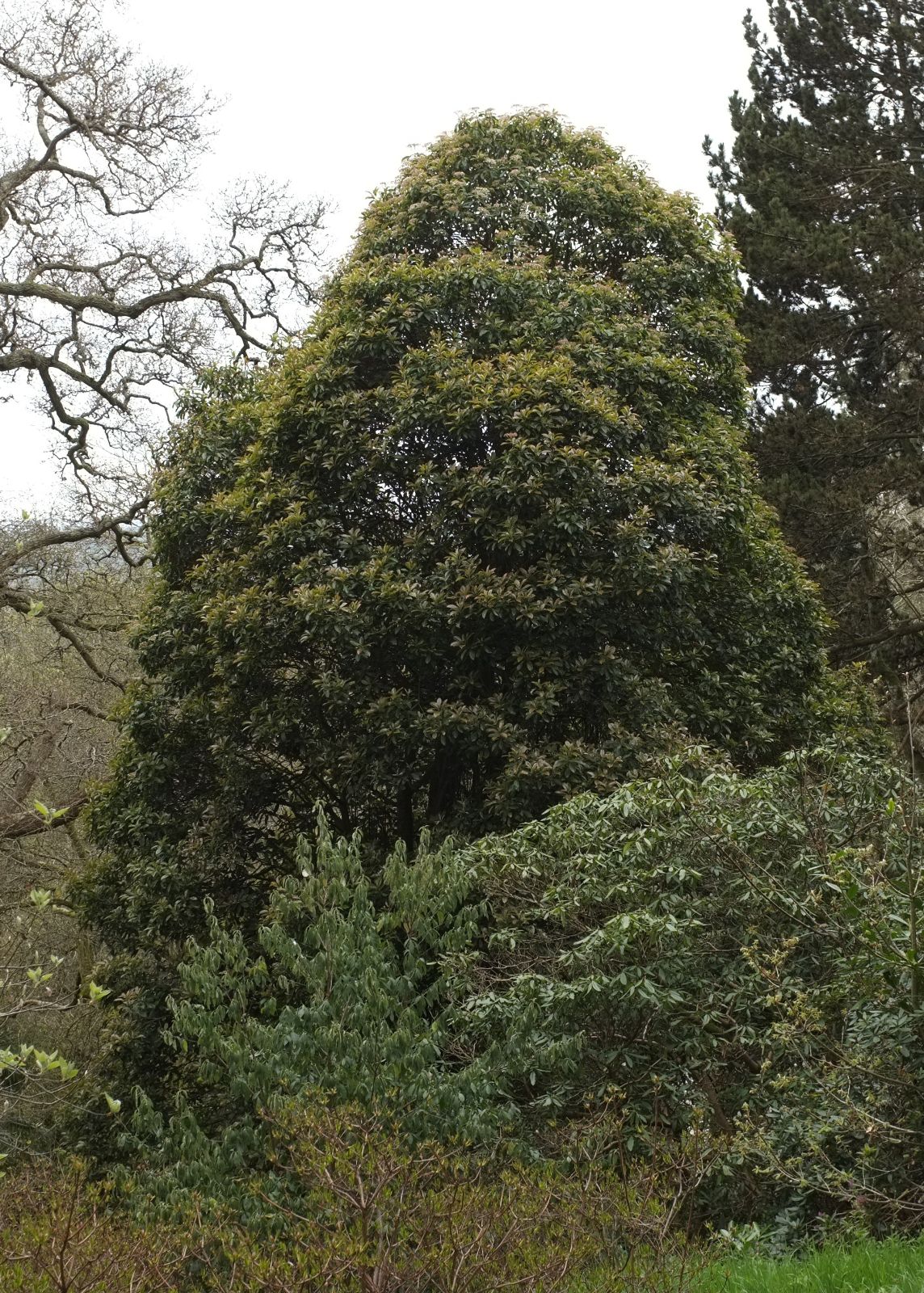Photinia serratifolia
Credits
Article from Bean's Trees and Shrubs Hardy in the British Isles
Recommended citation
'Photinia serratifolia' from the website Trees and Shrubs Online (treesandshrubsonline.
Genus
Synonyms
- Crataegus serratifolia Desf.
- Photinia serrulata Lindl.
Infraspecifics
Editorial Note
The following text appeared in Bean under the name Photinia serrulata Lindl.
JMG, March 2023.
An evergreen shrub, or a tree ultimately 30 to 40 ft high in favoured situations; branchlets stout, glabrous. Leaves oblong, very firm and leathery, reddish when young, 4 to 8 in. long and from 11⁄2 to 31⁄2 in. wide, rounded or tapering at the base, shallowly toothed, perfectly glabrous on both surfaces; the stalk, however, which is from 1 to 11⁄2 in. long, is clothed with whitish hairs which also extend up the midrib when young. Flowers white, 3⁄8 in. in diameter, produced in April and May in large, terminal corymbose panicles 4 to 6 in. through; petals glabrous. Fruits about the size of common haws, red. Bot. Mag., t. 2105.
Native of China; first introduced by Captain Kirkpatrick of the East India Co., in 1804. Where it thrives, this is undoubtedly one of the finest evergreens ever introduced. At Kew it is hardy in all but exceptional winters, but it is only seen at its best farther west (see below). It is most beautiful in spring, when the white flowers are associated with the rich brownish-red, shining young leaves, but near London the latter are apt to be spoilt by late spring frosts.
The following specimens have been recorded in recent years: Killerton, Devon, by the Chapel, 44 × 31⁄4 ft (1970); Pylewell Park, Hants, 26 × 21⁄2 ft (1970); Bath Botanic Garden, 30 × 31⁄4 ft (1962); Luscombe Castle, Devon, 45 × 43⁄4 ft at 3 ft (1970); Trewithen, Cornwall, 50 × 3 ft (1971); Derreen, Co. Kerry, Eire, 30 ft high on two stems (1966)



